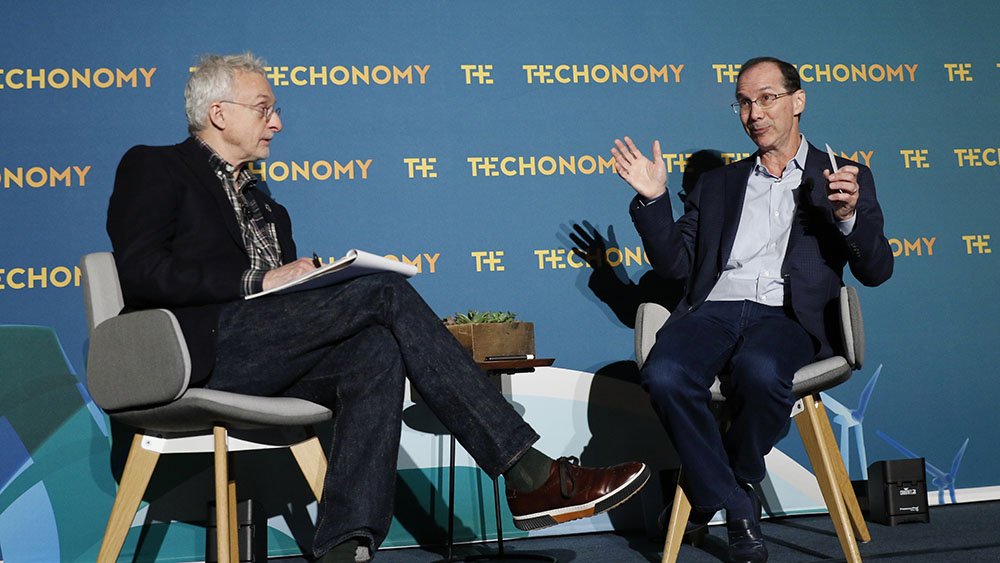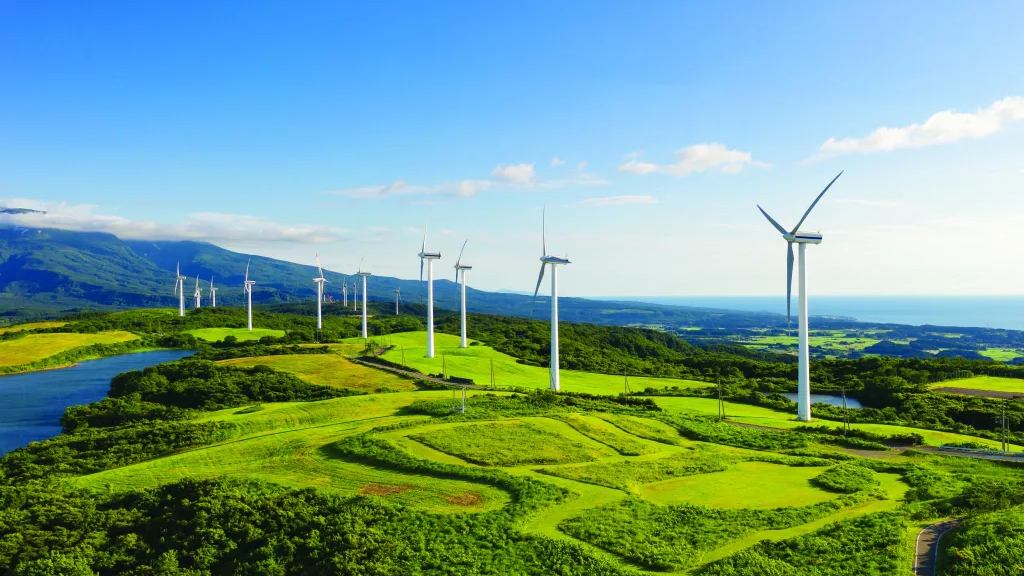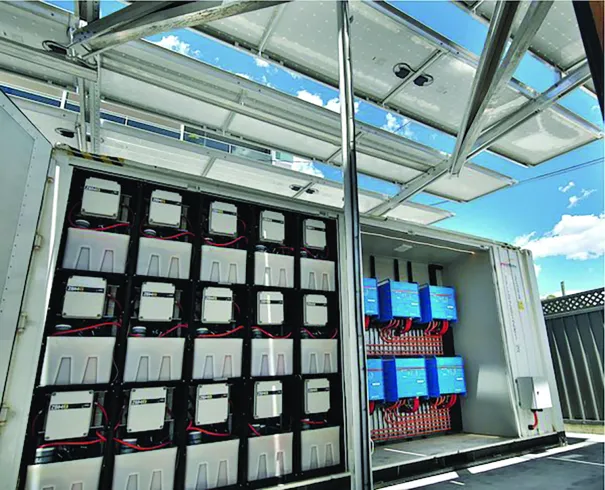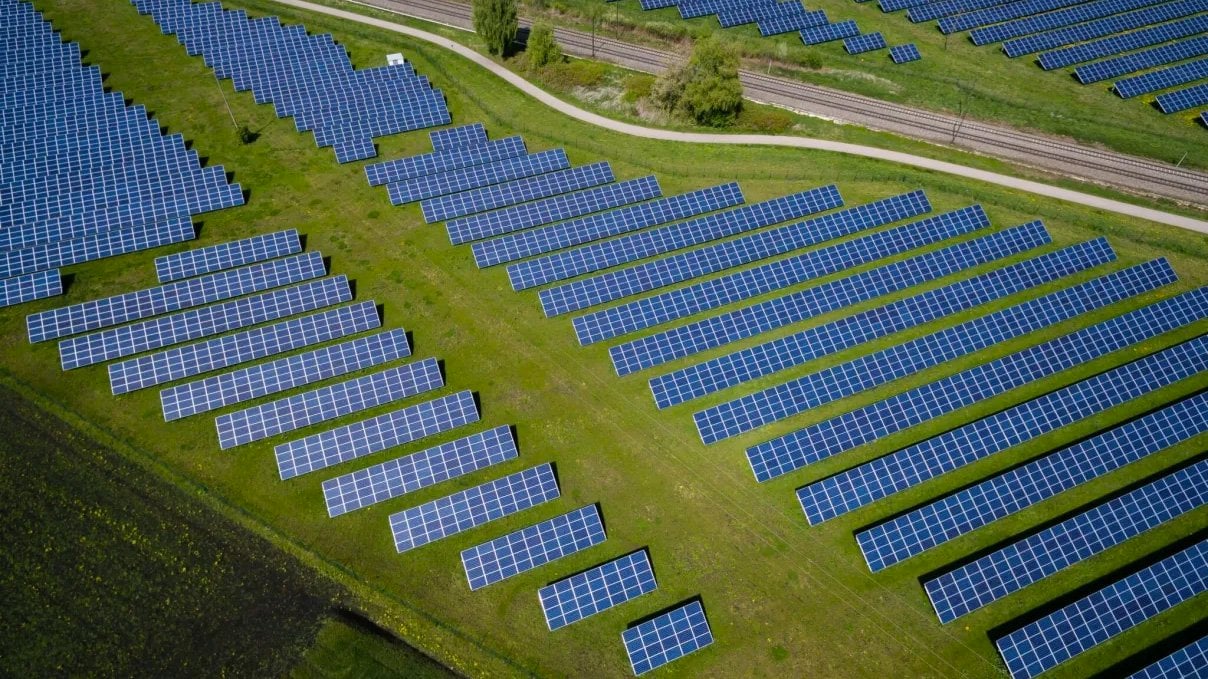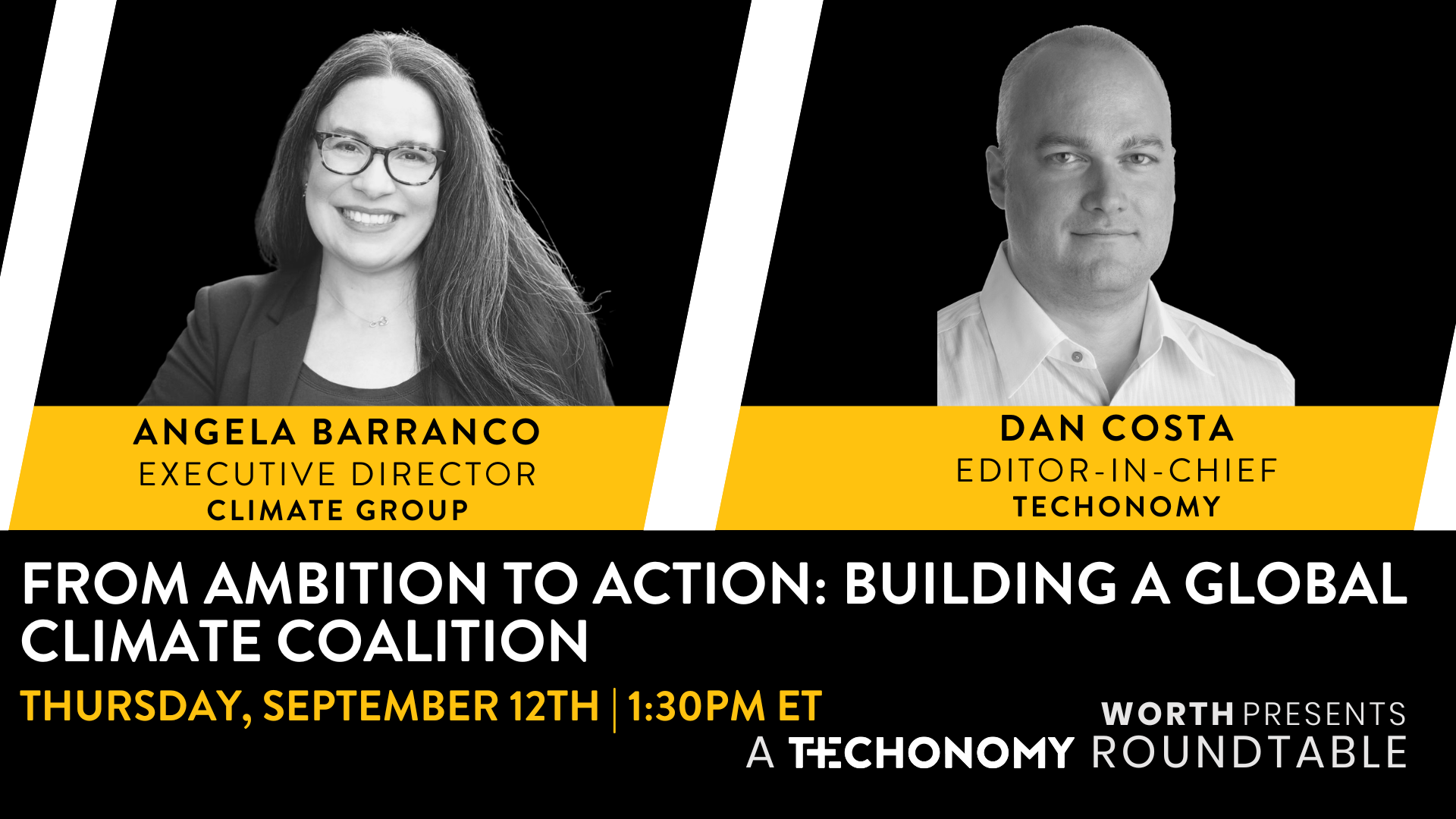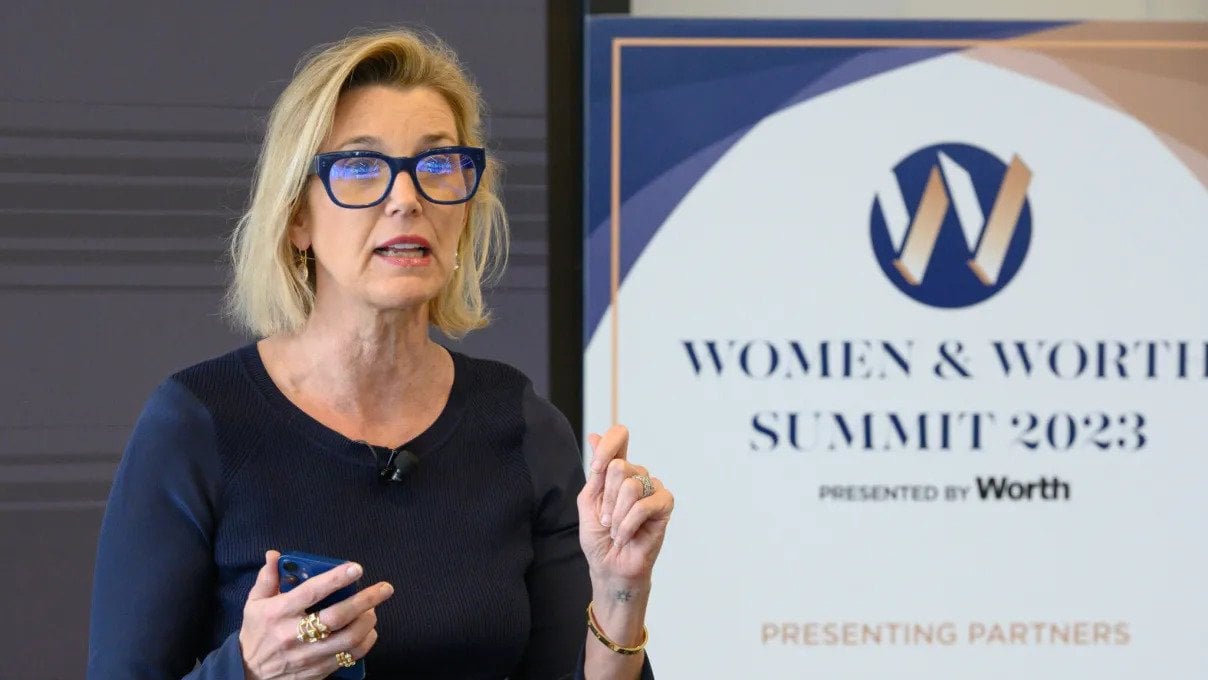Why, I wondered, was the enthusiasm so high at this week’s Techonomy Climate conference in Mountain View? So I asked a smart friend why climate action suddenly commands so much passion. “The pandemic helped people realize a disaster can strike everyone on the planet all at once,” they answered. “Almost none of us really thought it was possible before.”
It was as good an explanation as any. But wow—are people energized to do something about climate! (Including us.) The 250 people who joined the day-long discussion about tech’s role in addressing the crisis were truly buzzing. There were scores of climate-focused venture capitalists; activist-executives from companies like Intel, Google, and Nvidia; consultants and NGOs aplenty; and entrepreneurs–it felt like everybody was launching a climate-tech startup. Recordings of all Techonomy Climate sessions will be available soon.

At the center of the conference, almost its spiritual guru, was serial entrepreneur and climate tech eminence grise Bill Gross, creator of Idealab. He spoke mid-day, but both before and afterward he sat in a corner furiously taking notes on his laptop, absorbing even more ideas. In our inspiring on-stage conversation, he added another proof point that things are truly changing: “A professor at MIT told me half his students want to create climate tech. The other half want to work in AI or robotics–so they can apply it to climate tech.”
Gross has launched over 100 companies, 45 of which have had significant financial exits. But at the moment he primarily focuses on three:
- Heliogen, where he’s CEO, creates ultra-high heat for industries like cement by focusing hundreds of big solar mirrors on a single concentrator atop a central tower.
- Energy Vault, which just went public via SPAC and which Gross co-founded, builds giant energy storage systems–a kind of simple battery–that time-shifts electricity from renewable sources. Solar or wind power lifts 32-ton cement blocks (or “dirt,” as Gross likes to call it, emphasizing the elementality of the process). They get suspended high in the air inside vast purpose-built sheds. When there’s no sunshine or wind, power gets generated as the blocks are slowly lowered.
- Carbon Capture (yes he got that URL) is still in an early phase. It aims to do exactly as its name says, but with less expensive methods, Gross hopes, than the numerous other companies attempting the same thing.
One reason he felt so central to Techonomy Climate was because his near-religion is to use the fruits of Moore’s Law to tackle climate. Just about everything he does aims to reduce the price of sustainable carbon-free energy by tapping into the ever-dropping cost of computing. “Energy is freedom. Energy is happiness. Energy is GDP,” he says. “The more energy a society has, the more everything gets better–health, wealth, freedom—everything. So driving the cost of energy down towards zero is the biggest economic win-win in history.”
Heliogen elegantly demonstrates how faster processors can improve climate tech. Video cameras, mounted high on the tower where heat gets concentrated, continuously study the mirror array as the sun moves across the sky. Sophisticated software on powerful computers constantly adjusts every mirror’s exact position to direct the greatest amount of heat at the concentrator.

There were numerous other illuminating moments. For example, we couldn’t have a conference about tech’s intersection with the climate issue without tackling how online misinformation is making action harder. Opening speaker Katharine Hayhoe eloquently described her life as a climate scientist who tries to enlighten climate skeptics about the gravity of humanity’s crisis. (Her recent bestseller Saving Us is something of a how-to book for doing that.) She is an enthusiastic advocate of the value of dialogue online, especially on Facebook. But she also described her frustrating struggles with the company and how it has made her job harder.
At one point Facebook decided the phrase “climate change” was a political statement, she recalled, during one of its many confusing shifts in how it moderates speech. The company told her she couldn’t use the term unless she registered with the company as a political organization. Hayhoe is clearly a pleasant and unflappable person, but her outrage at the request was tangible even in recollection. Of course she refused. “Thermometers don’t take sides,” she told the conference.
Another moment that captured the crowd’s attention was when electric vehicle expert Michael Dunne compared US efforts to those of China. (He publishes a newsletter called Zozo Go and hosts the Driving With Dunne Podcast.) He said Tesla’s successes led many Americans to mistakenly believe the U.S. leads the world in EVs. In fact China is far, far ahead. This year five million EVs will be sold there, compared with three million in Europe and only one million in the U.S. And the geopolitical imbalance is even worse when you factor in the batteries at the heart of EVs. The vast majority of those are made in China. The U.S. only makes about 5% (mostly at Tesla’s joint venture factory with Japanese company Panasonic in Nevada).
Dunne expressed profound alarm about how dependent the entire world is on China, not only for EV batteries but also mining and processing their raw materials. The vast preponderance of all minerals like cobalt, lithium, graphite and nickel that go into batteries get shipped to China for refining, even when they’re mined in Africa or Latin America. That’s because, in part, communities in the US object to such giant and often dirty industrial facilities.
Dunne said it is hugely urgent the U.S. gain more control over mining and processing battery constituents and make more of the batteries here. So it was gratifying when only two days later President Biden announced an emergency national effort with the seldom-used War Powers Act to boost U.S. mining and processing of battery minerals and improve the domestic battery supply chain. Yet another sign that things are quickly shifting in a good direction.
There were at least five companies represented on stage that help other companies measure and manage down their greenhouse gas emissions, using software and other tools. Startups Persefoni and Watershed were joined by Microsoft, IBM, and Salesforce. If the new proposed SEC regulations which would require large companies to report emissions alongside financial results go into effect business is likely to boom.
Many at the event spoke about the urgency of putting a price on carbon, either through markets or by taxing it. The U.S., again, is badly behind other countries, though some states, notably California, are leading. Active national markets already exist in Europe, China, and Canada. That last country’s former environment and climate minister, Catherine McKenna, is the one who helped put in place a national carbon market. She closed the conference with Fred Krupp of the Environmental Defense Fund (EDF).
There was a strong sense of determination throughout the day, to act before it’s too late. During a session on climate justice, moderator Caitlin Hamilton of Techonomy asked the panelists if they were optimistic. Heather Toney, EDF’s vice president of community engagement, was decisive: “I’m the mother of a five-year-old and a 16-year-old. I don’t have a choice.”

